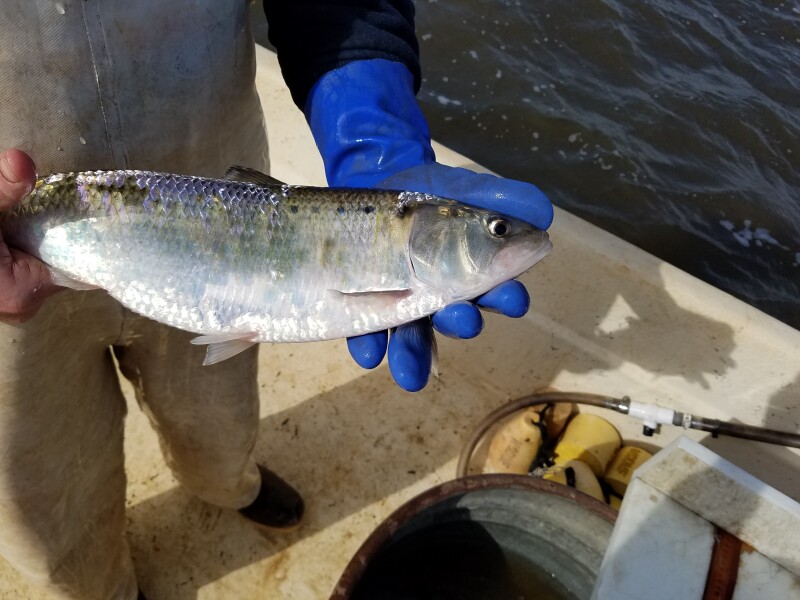When Mr. Lee Craddock started fishing American shad as a child in the 1960s, the fishery in Albemarle Sound, N.C., was still strong but already depleted from what the old folks in his family remembered.
“I fished with my kin,” says Mr. Craddock, speaking with a very distinctive high tider accent. “I remember one time; my father and uncle came and got me out of school to help fish the pound nets. We filled one 24-foot deadrise and half of another. It was about 3,000 pounds from two nets.” That’s the most Mr. Craddock ever saw from a fishery that had played a vital role in sustaining feeding people on the East Coast for thousands of years. “But that was nothing compared to what they said they got in the 40s and 50s.”
George Washington owned a shad fishery on the Potomac, and shad swimming up the Schuylkill River in Pennsylvania in the spring of 1778 are credited with saving the Continental Army at Valley Forge. When Mr. Craddock was born, North Carolina fishermen caught over a million pounds of shad a year. In 2023, the state landed 27,341 pounds.
But the 71-year-old Mr. Craddock didn’t fish last year, and he won’t fish this year, because the gear—anchored, large mesh gill nets—he uses has been prohibited. “Large mesh anchored gillnets are prohibited during the American shad open season due to interactions with striped bass. Striped bass have had poor spawning successes since 2017 and are currently under a no-harvest provision in internal coastal waters of North Carolina,” says Holly White, a biologist with the North Carolina Division of Marine Fisheries. “But the commercial fishery for American Shad is still open despite the gill net prohibition. This year (2024) the season is open in all internal joint and coastal waters, except the Cape Fear River, from Feb. 15 to April 14. It’s a little later at Cape Fear, Feb. 20 to April 11.”
According to White, some gill net types are exempt from this closure. Exempt gill nets include drift, run-around, strike, and drop gill nets of 3.25 to 4 inches or 5.5 to 6.5 inches stretched mesh with a possession limit of 800 yards. “But they have to fish them,” she says. “There are no overnight soaks for large mesh gill nets (primary gear for shad). Large mesh nets set must be actively fished. And the nets are shorter than they used to be. Instead of 1,000 yards they’re about 800 yards.”
The Atlantic States Marine Fisheries Commission (ASFMC) requires states to have an approved sustainable fishery management plan in place to try and restore the fishery, but according to White, American Shad in North Carolina are not bouncing back as fast as had been hoped. “You’d think with the restrictions we’ve had in place since 2014 in the Albemarle Sound that they would have come back stronger. But we’re not seeing that here, yet. There have been improvements to passage through dam removals along the east coast, but many mainstem impediments remain preventing passage upstream.”
According to the ASFMC as much as a third of the spawning shad cannot reach spawning grounds due to habitat destruction and dams, and this can create a negative feedback cycle in terms juvenile recruitment and to some extent water quality, White notes. “Larvae of freshwater mussel species can attach to the shad gills and stay with the shad several weeks developing into juveniles, dropping off in a new location, where they help clean the water,” she says, noting the interconnectedness of species and habitats.
If the shad stocks improve, the next trick might be finding people to eat them. “I once asked a shad buyer where he sold his shad,” says Ryan Speckman, co-owner of Locals Seafood in North Carolina. “He said, up north. I asked, who eats them? He said, I don’t know. I think they’re all dead.” Nonetheless, Speckman is selling shad and the prized shad roe in season, noting that the the fishery primarily targets female shad for their roe. “It’s just a short while in March,” he says







